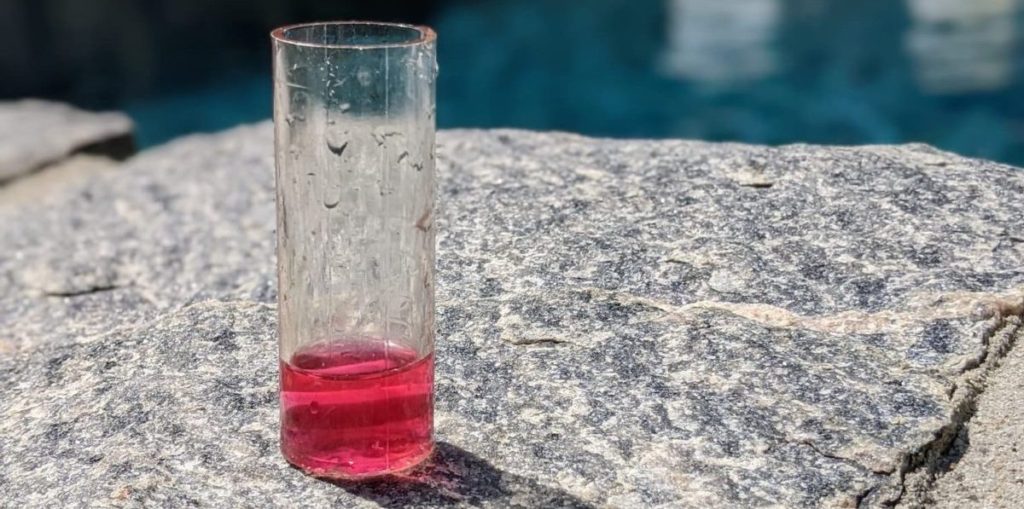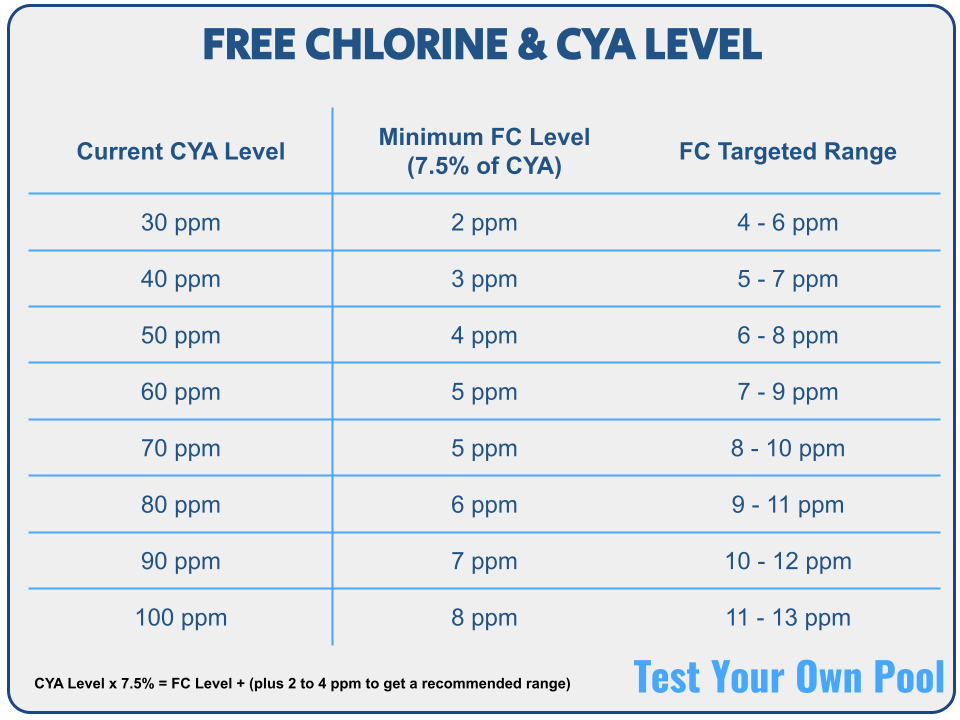Free chlorine (FC) is the overall level of sanitation in the water that kills all the germs, algae, and other contaminants that may be living. It is simply the amount of chlorine that is “free” or available to do work that hasn’t been used yet.

When free chlorine reacts with those contaminants, that is known as combined chlorine or chloramines. In simple terms, free chlorine keeps chloramines out of the water.
There should always be free chlorine present in your pool. Having none is an open invitation for algae to a pool party.
How much to raise free chlorine is determined by your cyanuric acid (CYA) level, but at a minimum, it should be around two ppm at all times.
What is Total Chlorine?
As stated above, free chlorine measures the amount of chlorine available and combined chlorine tells us how much is used to fight the bad stuff.
Total chlorine (TC) is simply a math equation that adds Free chlorine and combined chlorine. TC = FC + CC.
You might hear or read about free chlorine and total chlorine being used interchangeably. While they are different, as described above, in an ideal scenario, that should be OK. After all, if CC should be 0, then FC = TC, right?
How to Test for Free Chlorine in the Pool
Testing your water is very important to keep everything properly balanced. The most basic rule of thumb here is that if TC = FC, then your water is balanced. If TC > FC, there are chloramines present, meaning something in the water needs fighting.
Some testing methods may show only total chlorine. However, without measuring free chlorine, it is nearly impossible to determine if combined chlorine is present.
Using a liquid-based testing kit to test for chlorine is by far the best testing method. Most kits offer free chlorine and combined chlorine testing, so you can be sure you are seeing the whole picture.
The most accurate and reliable pool testing kit.
Type of Chlorine Test: FAS-DPD
Read our full Taylor K-2006 Review.
How Much Free Chlorine Should Be in the Pool?
While free chlorine levels should always be at a minimum of 2 ppm, the recommended amount in the pool at any given time should be determined by the amount of cyanuric acid (CYA) in the pool.
CYA stabilizer acts as chlorine’s buffer or “bodyguard”. It protects chlorine levels from UV ray degradation to last longer in the pool.
Very smart people like Richard Falk determined that pools need at least 7.5% of the CYA level to be FC in order to fight algae growth. So, with that calculation in mind, the following FC levels should be recommended based on CYA, using the following math equation:
CYA Level x 7.5% = FC Level + (plus 2 to 4 ppm to get a recommended range)
Ideally, you should be in the higher range of these estimates but should never fall below the minimum (nearest whole number).
Check your targeted range using our handy calculator or refer to the guide below:
Free Chlorine & CYA Levels

Take note of how unsustainable it is to keep FC above 70 ppm; that is why it’s recommended that CYA be between 30 and 60 to keep chlorine realistically level at all times.
However, owners of a saltwater chlorine generator can keep CYA levels a bit on the higher end. Most manufacturers recommend CYA to be between 60 to 90 ppm.
Keeping it All in Check
The concept of free chlorine and combined chlorine is pretty simple when laid out in front of you. It also reinforces why free chlorine levels should be tested daily rather than weekly.
Depending on how you sanitize, free chlorine levels can drop quickly. After all, no one likes that chlorine smell!

